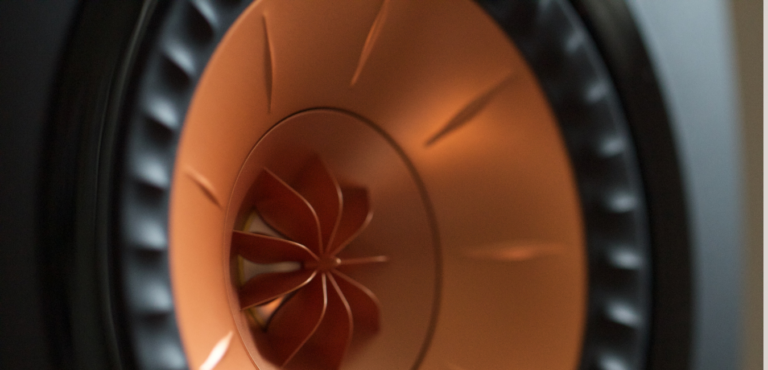Struggling to Invest? Learn more about ‘Systematic Mutual Fund Investment Plan’ in India and Thank us later for that.
Gone are the days when we used to get 8-10% returns in FD which helped in beating inflation. Today, FD returns are on an average 4-5% which is not enough to beat inflation. Also, there is 10-15% increase in education and health related expenses every year.It is certain, we can’t pour in all our savings into FD and RD blindly and have a smooth ride over inflation, because there is risk of losing money to inflation and our purchasing power.
So, as you can see, although FD and other debt products are relatively safe but there is an element of loss/risk involved even in Fixed Deposits. So, what is the solution?We often keep hearing about soaring equity market, some fancy IPO and cryptocurrency but going to direct equity and fancy asset class from FD is too much to ask for and is often risky.
So, what is the Plan?
One of the better routes is Equity Mutual Fund. But again, as an intelligent investor, we can’t invest randomly in any product as it is our hard-earned money.
Understanding Equity Mutual Fund
Unlike FD, there are several types of Mutual Funds (Debt, Equity, Balanced/Hybrid etc.). Even in each type of Equity funds there are several categories of fund. This makes it a bit complicated for a new investor in arriving at the final 2-3 funds for investment.For simplicity, we will today focus only on Equity funds. The popular categories in Equity Funds are Large Cap, Mid Cap, Small Cap and Flexi Cap.
Understanding Equity Mutual Fund
- Large Cap
- Mid Cap
- Small Cap
- Flexi Cap
As the name suggests, the category is based on market capitalization of the stocks. Large Cap would be investing in larger companies and Small Cap in smaller companies.Large Cap is defined as 1st to 100th company in the Indian stock exchanges as per Market capitalization, Mid Cap as 101 to 250th company and Small Cap starts from 251st ranked company.
Other categories include Value fund, Contra fund, Focused fund, Thematic fund, ELSS etc. These are more specialized categories and may carry larger risk, therefore one should invest in these only after gaining more knowledge on Mutual Fund and spending some time as a Mutual Fund investor. For now, let us focus on the popular and simple categories.

Historical returns of several mutual fund categories:
Mutual Fund Category | Trailing returns of Top five mutual funds – 5 years | Trailing returns of Top five mutual funds – 9 years |
Large Cap | 18.5% | 16.5% |
Mid Cap | 22.0% | 21.0% |
Small Cap | 23.5% | 24.0% |
Flexi Cap | 21.0% | 17.5% |
Source: www.moneyworksforme.com ; https://www.valueresearchonline.com/
From the above table, the returns of these categories range from 17% to 24% which is a great return by all standards, beating inflation comfortably and even can make you rich. If you think these returns are historic and appear higher let us, just consider 15% return compounded for 10 years which is quite conservative with respect the historic returns.
A 15% compounded return can give you approximately 4 times your initial investment in 10 years and 8 times in 15 years. So roughly 1 lac of investment will turn 4 lacs in 10 years and 8 lacs in 15 years. Now if we consider 20% return, 1 lac will turn into 6 lacs in 10 year and more than 15 lacs in 15 years. A person diligently investing each month his or her 50% savings in mutual fund can possibly make a fortune by the end of 20 years with returns of even 15%. Although past performance doesn’t indicate future returns however it does give us some idea on the investment product’s performance. Returns alone shouldn’t be the criteria to invest in equity but should be balanced by the risk involved.
What Fund is right for you?
While Small Cap may seem attractive based on the historic returns, the smaller companies in which the fund invests in may be more vulnerable to the economic headwinds and price volatility which will be reflective in the funds NAV (Net Asset Value). The volatility can be extreme and in short term like one year it can be down by may be even more than 50%. Therefore, one should choose the funds as per risk appetite.
If you can bear the volatility and can continue your investment for 5 to 10 years you may invest in Small Cap. In terms of risk, Large Cap can be relatively less risky followed by Mid Cap however that doesn’t mean it doesn’t’ carry risk.
Even a Large Cap fund can lose 30-40% in extreme situation within a year. Therefore, another thing one should ponder on is duration of the investment. One may choose equity mutual funds only if the time horizon is more than 5 years and can withstand the volatility.
Therefore, a person whose risk appetite is lower, should go majorly by Large Cap or even Index funds (Sensex or Nifty50 or next Nifty50) and a bit of Mid Cap. With larger risk appetite one can also subscribe to Small Cap.
Another way is to choose Flexi Cap where the fund has flexibility to invest in Large Cap, Mid Cap and Small Cap in any proportion. Some of the Flexi fund also invest in other countries listed stock which also helps in getting exposure to foreign equity market.
After one has fixed on the type of fund, to arrive at exact fund one can check the returns of top funds in that category for last 5 years or 10 years and choose from the top 5 funds. One can refer to multiple sources in doing this exercise. One should be careful on not just getting carried away by returns of last one year, the fund should have a good track record for longer time frame. There are several instances where best performer of a year doesn’t even appear in top funds next year. You may use any website for this analysis including Moneycontrol, Valueresearch, Moneyworksforme etc.

How much should you invest and by which route SIP(Systematic Investment Plan) /Bulk?
It depends on an individual’s income and risk appetite.
However, for a new investor who has just started his job or few years into the job, he or she may invest 50% of his savings in equities through mutual fund but only after he or she has put aside emergency money in an FD (6 months to one year of expense). As we age, we can decrease the allocation.
However, as a thumb rule one should not put money in equities which one may require in next 5 years. Conservative allocation will help ride the volatility smoothly and there will be less urge to liquidate in emergency situation and market fluctuations.
Now comes the common question on whether should we invest in bulk or SIP?
During the initial phase of the career, one should start SIP as one may not have a lot of savings. Even if one has money in bulk and wants to invest in equity mutual fund, one can do it in 5-6 tranches over a period of may be 1-2 years. This would absorb the market volatility.
Although most people say we shouldn’t time the market however if you invest with the above rule, in few years you would have good savings in FD (as you were investing 40-50% in debt products). When market corrects 10% or more you can invest a tranche from your savings/FD.
However, this one should try after having experience of few years of investing in mutual funds and after accumulation of additional money in FD or other debt products. As a thumb rule one should not deploy emergency fund into equities.
Final Thoughts
As India continues to grow economically, the leading companies have to grow too and at a higher rate than GDP. And as the companies grow, mutual funds invested in them have the potential to return much more than FD. However, it is not a linear path and volatility will always be there. Therefore, either invest or do SIP for longer term. There is no certain path to riches and definitely there is no short cut to it as well until as long as we are very lucky about it. Data indicates people who trusted equity for long term and didn’t bother about volatility in the market were rewarded with high returns.
100% efficiency has always been technically impossible. But one thing is that equity provides a high probability of beating inflation and has an edge on debt products in the long term. It has been also proven in last several decades.
Therefore, it is wise to deploy some part of your savings in mutual funds for longer time and enjoy the returns. Who knows may be after 10-15 years you may be smiling over high returns and substantial money and thanking yourself to have taken the right decision?






















Very informative 👏….will surely try to make the best out of the knowledge gained.
[…] Related: Struggling to Invest? Learn more about ‘Systematic Mutual Fund Investment Plan’ in India and Th… […]
I found the points on having only 50% of savings in equity and keeping a 1 year emergency fund a priority very interesting. Thanks for this, would like to read and learn more from your articles.
[…] Related: Struggling to Invest? Learn more about ‘Systematic Mutual Fund Investment Plan’ in Indi… […]